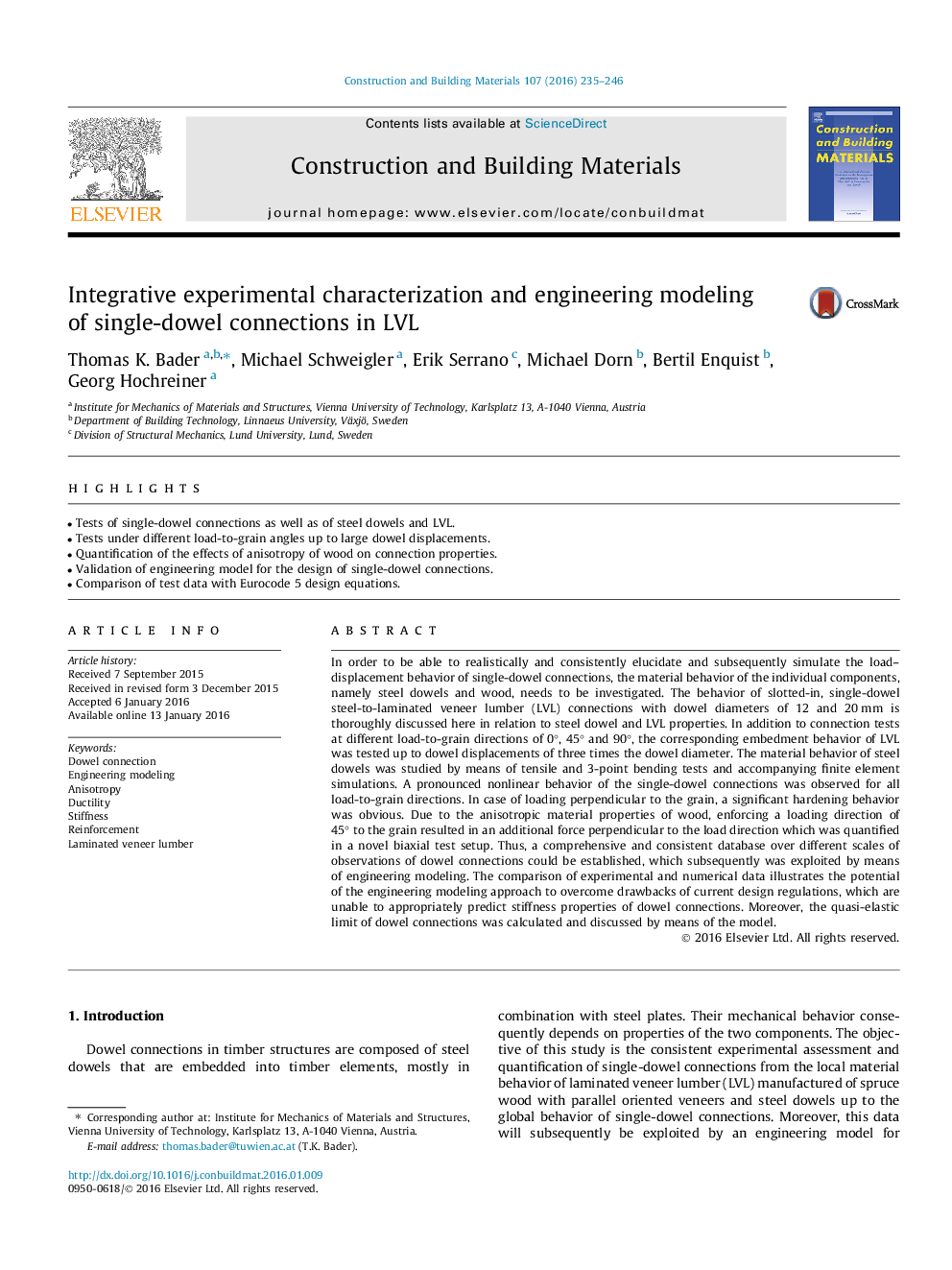| Article ID | Journal | Published Year | Pages | File Type |
|---|---|---|---|---|
| 256252 | Construction and Building Materials | 2016 | 12 Pages |
•Tests of single-dowel connections as well as of steel dowels and LVL.•Tests under different load-to-grain angles up to large dowel displacements.•Quantification of the effects of anisotropy of wood on connection properties.•Validation of engineering model for the design of single-dowel connections.•Comparison of test data with Eurocode 5 design equations.
In order to be able to realistically and consistently elucidate and subsequently simulate the load–displacement behavior of single-dowel connections, the material behavior of the individual components, namely steel dowels and wood, needs to be investigated. The behavior of slotted-in, single-dowel steel-to-laminated veneer lumber (LVL) connections with dowel diameters of 12 and 20 mm is thoroughly discussed here in relation to steel dowel and LVL properties. In addition to connection tests at different load-to-grain directions of 0°, 45° and 90°, the corresponding embedment behavior of LVL was tested up to dowel displacements of three times the dowel diameter. The material behavior of steel dowels was studied by means of tensile and 3-point bending tests and accompanying finite element simulations. A pronounced nonlinear behavior of the single-dowel connections was observed for all load-to-grain directions. In case of loading perpendicular to the grain, a significant hardening behavior was obvious. Due to the anisotropic material properties of wood, enforcing a loading direction of 45° to the grain resulted in an additional force perpendicular to the load direction which was quantified in a novel biaxial test setup. Thus, a comprehensive and consistent database over different scales of observations of dowel connections could be established, which subsequently was exploited by means of engineering modeling. The comparison of experimental and numerical data illustrates the potential of the engineering modeling approach to overcome drawbacks of current design regulations, which are unable to appropriately predict stiffness properties of dowel connections. Moreover, the quasi-elastic limit of dowel connections was calculated and discussed by means of the model.
